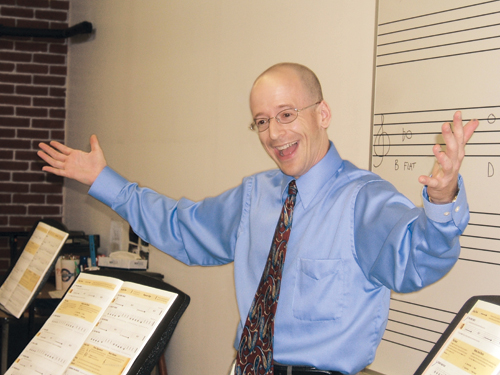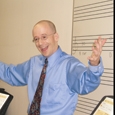
Someday your beginning instrumentalists will perform Holst Suites and Mozart Symphonies on concert stages large and small. Someday they will experience the joy, the emotion, and the exhilaration of the closing chords of a Strauss tone poem or a Sousa march or a patriotic medley. Today is not that day, but it is difficult to describe the enthusiasm, the excitement, and the energy exhibited by students during their first few full ensemble classes. This is an ideal opportunity to transform that energy into good behavior, while at the same time teaching proper technique and musicianship skills. Here are some tips on teaching beginning instrumental music ensembles.
Rules
Establish the rules at the first rehearsal, then reinforce those rules at the next rehearsals. At their first rehearsal students will be eager to play their instruments immediately, but failure to insist on order will result in chaos. Be sure students fully understand your expectations. If necessary, formally or informally quiz your students about the rules for band or orchestra over the course of several classes.
I have also found it useful to have students help create the rules for the ensemble. Acting as facilitator, teachers can solicit questions from the group, write them on a blackboard in front of the class, then summarize them into a few clear, succinct rules. Having students take ownership of their goals and subsequent behaviors can be extremely valuable in fostering success throughout the entire school year. When it becomes necessary to reinforce the rules, it is easy to remind students that we all created these rules together.
Seating
Beginning bands do not need a first chair trumpet player, nor do beginning orchestras need a concertmaster. The divide between the first and last chair students of any particular beginning ensemble is usually insubstantial. Some students may work harder or learn musical concepts more quickly than others, but rather than establishing a first chair, create seating charts that best help all players. Place problematic or unruly students in your direct line of sight, and place reliable, well behaved ones on the outsides of each row. This should reduce the number of behavior problems, which will lead to increased instructional time. Have stronger players seated next to weaker players. Young students are still learning the fundamentals of instrumental music, and many will lack confidence, so placing strong players next to weaker players may help boost the confidence of the weaker players, while simultaneously creating leadership opportunities for stronger players.
Leading Rehearsals
Music teachers are much less interesting to beginning students than their shiny instruments will be, and the attention spans of nine-, ten-, and eleven-year-old children are shorter than those of high school students. Limit your talking as much as possible for the first few rehearsals, then gradually increase the amount of time spent talking as needed. Plan varied and numerous activities for the first few rehearsals.
Similarly, silence and down time can be effective tools in leading a rehearsal. Rather than raise your voice to bring unruly students to order, simply stand in front of the group with arms folded or with hands on hips until students become quiet. In some cases, extended silences can be dramatically effective; when unruly students realize their inappropriate behaviors, and become focused on awaiting your response, their attention often increases.
One of my undergraduate music education professors had a rule that when he was on the podium behind the conductor’s music stand, band members were to remain on task, but when he would step to the side of the music stand, students were free to stand and stretch or talk to neighbors quietly. Adapting a strategy like this can significantly increase a conductor’s overall effectiveness during rehearsals.
Hearing instruments separately and together in large ensembles is crucial to the success of beginning instrumentalists. Teachers should perform short passages on their instruments for students and play high-quality recordings of soloists and large ensembles for students. Perhaps the most valuable tool available is recordings of the compositions we teach our students. Many publishers include a recording with the purchase of a piece. If a recording is not included, visit the publisher’s website to determine if a recording may be purchased or is available online. It might also be beneficial to ask the conductors of the local high school or college bands and orchestras to create recordings for you. It should not take an advanced group much time to make recordings of beginning literature.
Non-Traditional Conducting
The traditional style of conducting may not be especially useful to beginning band and orchestra students. Sometimes clapping or stomping a beat or amplifying a metronome is more effective than traditional conducting, particularly during the first few rehearsals. Ultimately, students should learn to follow a conductor’s beat patterns and gestures and should sit in such a way that allows for them to be able to see the conductor, but non-traditional techniques can and should be used during the earliest large ensemble rehearsals.
Decreasing physical space between the teacher and a student can be an effective classroom management tool. If a student is not on task, walk directly toward him. Most young children are pleasers, they do not want to disappoint their teachers. Simply standing in front of an unfocused student can be an excellent means to help him get back on task. Doing this while the ensemble is playing is a good way to corrected the behavior of one student without stopping the entire group.
There are better ways to get students’ attention than trying to shout over them. Turn your back to the ensemble, and conduct the air behind you. Walk away and sit down. Hop on one foot. Do anything to alter what they are used to, which will draw their attention to you. Students should know to watch you at all times, but there may be instances when it does not happen. In cases like this, be interesting in how you indicate that the band or orchestra should stop playing. Any change from the norm adds variety to a rehearsal and keep your students attentive and wondering what you will do next.
If students are experiencing difficulty responding your tempo, teach them to conduct. Have the students carefully put their instruments (and bows, for string players) in their laps or on the floor, and invite them to conduct along with you. Model a two-beat pattern and have students imitate you. Make tempo and style changes to your pattern while students adjust their gestures to match. Explain the role of a conductor or enlist students to help define it. Teaching how to conduct can help students understand why a conductor is necessary.
Assess
It is best to give students specific information about what they do well and what needs improvement. Such phrases as “Very good!” or “Nice job!” are less useful than “That crescendo at measure 16 was really good!” or “Nice job keeping the tempo steady!”
Students are often hypercritical of themselves and can be tougher on themselves than we are. Try this with your band or orchestra. After the ensemble finishes playing a piece in rehearsal, ask students to share something that was really good about what they just played. Then ask, “In a nice way, tell me something that we need to improve about what you just played”. Record the group’s performance during rehearsal, then immediately play the recording back to the students and ask the same questions. This technique can also be very effective in making an ensemble aware of both its strengths and weaknesses.
Make It Fun
Beginning band and orchestra classes should be fun. Students have all sorts of other options, both inside and outside of school. Although it is necessary to set goals and reach them, it is better to meet 95% of them and only lose five percent of students than to accomplish everything on the list but lose half the beginners after the first year. Do everything possible to encourage and inspire beginners to succeed in instrumental music, while at the same time make band or orchestra the most enjoyable class in the school.






